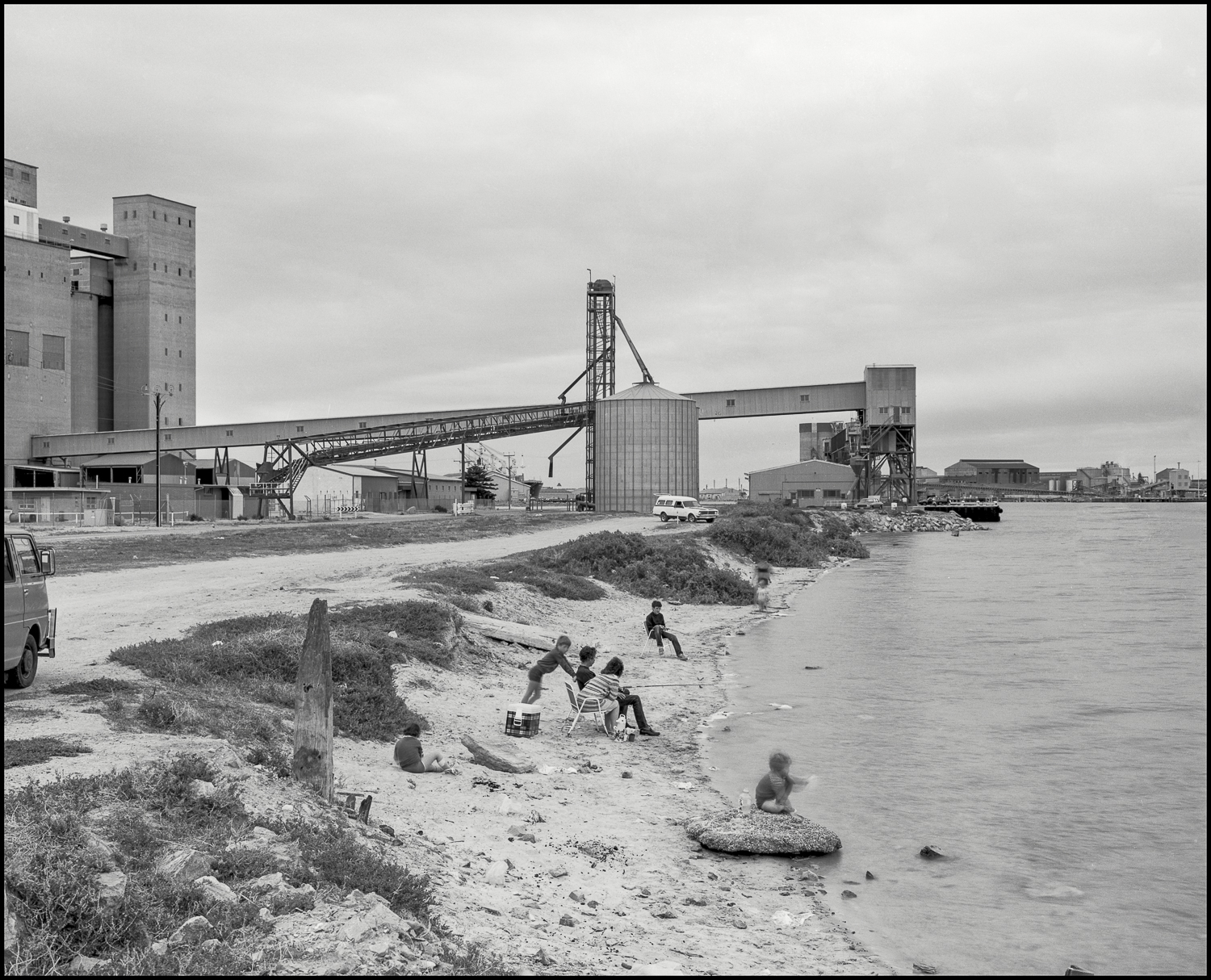One of the places that I used to visit and photograph was Port Adelaide and along the Port River estuary. I was initially attracted to the architecture of the industrial and commercial sites along and nearby the polluted Port River, as these signified the drivers of modernity in South Australia. Both sides of the Port Adelaide River had been zoned as sites for industrial expansion and the industry that was there used the river as a drain. In the 1980s large sections along the banks of the river were empty sites, and they were, to all intents and purposes, edge lands. These, however, were not empty urban landscapes evacuated of people.

Living in the suburbs, driving a Holden with free time at Port Adelaide for play is what the historical experience of being modern was in Adelaide. Those who were making the cars, the washing machines and the TV sets could also buy them.
Photography, if you like, was where art and the categories of everyday life met. This stood in marked contrast to the avant-garde at the Experimental Art Foundation, which along with the major art institutions and the practitioners of a post modernist staged and fictive modes of photography associated photography with a simplified and enfeebled realm of an outmoded pictorial style and a naive account of representation.
On their account realism, with its facile assumptions of visual transparency and deceptive form of natural representation equated realism with positivism’s view that the pictures of the world are in some uncomplicated sense reflections of the world. Realism was deemed to be out of date and second rate— it belonged to a dingy corner of a dusty Victorian cupboard—- rather than realism being viewed as a process of critical recovery and historical remembrance.
My weekend trips to the Port River away from the decaying sites of deindustrialisation in the rustbelt in Adelaide that had yet to be replaced made me realise that the river’s estuary was a favourite site for recreation–mostly fishing, if you could not afford a boat. This everyday working class playtime is set outside the world of dehumanising everyday work in the factories, even though the play takes with the space of industry. This play, commonly seen as prosaic and marginal, had a ritualistic communal quality to it.The experience of immersion in the fishing along the Port River is treasured. What was significant was the quality of experience that this type of play in everyday life affords. It was seen to be immensely valuable in the sense of making a life live worth living.

Behind the play in everyday life lie the economic forces of the unfettered markets that the Hawke/Keating Government brought to the fore in the 1980s. The view that all will be well, provided nothing is done to meddle with market forces, provided the ideological cover for the unleashing of financiers to enable the capital flows essential to a new phase of globalisation in which the United States deficits provided the aggregate demand for the world’s factories (whose profits flowed back to Wall Street closing the loop nicely). Progress took the form of billions of people in the South East Asia being pulled out of poverty whilst hundreds of millions of western workers were slowly being sidelined, pushed into more precarious or low-paid insecure jobs and forced to financialise themselves either through their superannuation or their homes.
One Response
from street to topographic photography | The Bowden Archives and Other Marginalia
[…] of the Port Adelaide work was more topographical in that the focus is on the altered […]